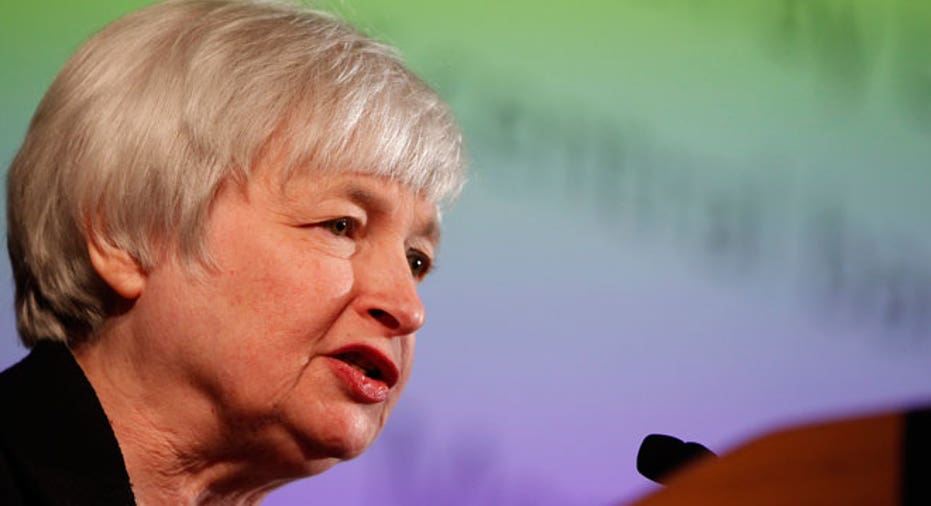The Fed Finally Pulled the Trigger, Here's How to Profit

They finally did it. Members of the Federal Reserve raised interest rates by a quarter point on Wednesday.
Now yield-hungry investors can turn to a dividend-themed exchange traded fund that can help leverage a rate increase by targeting companies with low correlation to interest rates.
Specifically, the Fidelity Dividend ETF for Rising Rates (NYSEArca: FDRR) is a type of dividend strategy for investors anticipating rising rates. The ETF also shows a respectable 2.95% 30-day SEC yield.
FDRR is designed to reflect the performance of stocks of large and mid-capitalization, dividend-paying companies expected to pay and grow their dividends and have a positive correlation of returns to increasing 10-year U.S. Treasury yields.
"Positive correlation to Treasury yields and sector neutrality may help protect investors’ returns in rising rate environments, when high-yielding stocks and sectors tend to underperform," according to a Fidelity Investments note.
Looking at FDRR's portfolio construction methodology, the underlying Fidelity Dividend Index for Rising Rates employs a multi-factor approach, including a 63% weight toward companies with higher dividend yields, and smaller 13.5% to avoid firms with payouts that are too high and might be cut in the future, 13.5% to those expected to grow dividends in the future and 10% to firms that perform better with rising rates.
The dividend ETF may be a timely play as Donald Trump’s presidential election victory and his inflationary economic policies could prompt the Federal Reserve to keep hiking interest rates - Trump has promised to stimulate faster economic growth with measures like a large tax cut and as much as $1 trillion in infrastructure spending.
The Fed did say the markets should anticipate three rate hikes in 2017, however they made similar promises this year and didn't follow through. So potentially, we may be in for a historically low interest rate environment even after a small hike. Consequently, dividend-paying stocks may be the right answer for income seekers.
"Interest in dividend-yielding stocks may persist given historically low bond yields and an aging demographic, with income needs better met through an investment in higher yielding equities," according to Fidelity. "Dividend for Rising Rates prioritizes income producing securities, aiming to deliver higher relative dividend yield."
Dividend growth as a means of trumping inflation could and arguably should serve to highlight the advantages of the ETFs that focus on dividend growth stocks, such as FDRR. That group is comprised of well-established ETFs that emphasize dividend increase streaks as well as a new breed of funds that look for sectors chock full of stocks that have the potential to be future sources of dividend growth.
For instance, FDRR is filled with robust names like Apple (NasdaqGS: AAPL) 3.5%, Microsoft (NasdaqGS: MSFT) 3.0%, Johnson & Johnson (NYSE: JNJ) 2.5%, JPMorgan Chase & Co (NYSE: JPM) 2.2% and Exxon Mobil (NYSE: XOM) 2.0%, among others.
Stocks with steady yields reassure investors of a company’s strong financial health. Additionally, dividend-paying stocks typically outperform those that do not pay over the long haul, with less volatility, due to the compounding effect of dividends on the investment’s overall return. Over the past 40 years, companies that boost payouts have proven to be less volatile than their counterparts that cut, suspended or did not initiate or raise dividends.
This article was provided courtesy of our partners at etftrends.com.



















